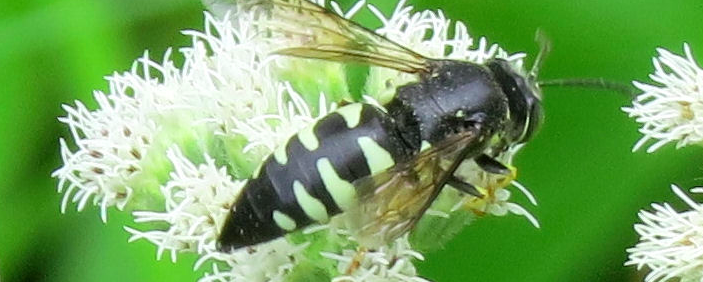
This black wasp has whitish or pale yellow, interrupted bands in the middle of the abdomen. The width of these lines decreases towards the tip of the abdomen. Its legs are clear and its wings amber or greyish. It measures 17 to 19 mm long.
Life cycle
The solitary female digs her nest in sandy soil. She goes hunting and brings back to the underground shelter a paralyzed prey that will serve as food for the larva. It lays an egg on this prey and then blocks the entrance to the burrow with sand. The larva feeds and transforms into a pupa in a cocoon before emerging as an adult.
Geographical distribution
It is a North American species.
Habitat
This wasp is found in open sandy areas. In urban areas, it can establish itself in playgrounds, parks, sandboxes, etc.
Food
The adult feeds on flower nectar.
The larva feeds on the preys captured and paralyzed by the female. These are usually immature bedbugs such as the green bug, pentatomid, pine bug, coreid, and other species of redbugs.
What you need to know
Along with the American bembex, this insect is one of the two most common sand wasps in Quebec. In some years, both species are common in city parks and playgrounds where sand-covered surfaces are found.
Ecological roles
Adults help pollination by carrying pollen from flower to flower as they feed on nectar.
Certain species of parasitoid flies lay their eggs on the larvae present in the nest, thus making it possible to control the populations of this burrowing wasp.